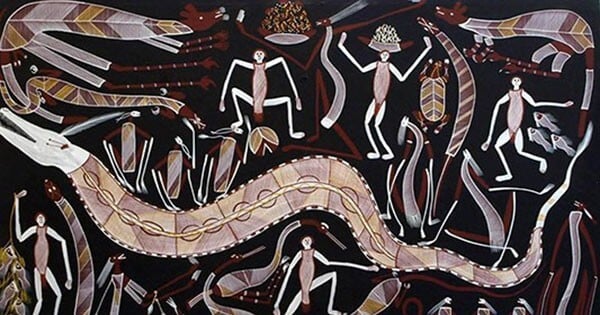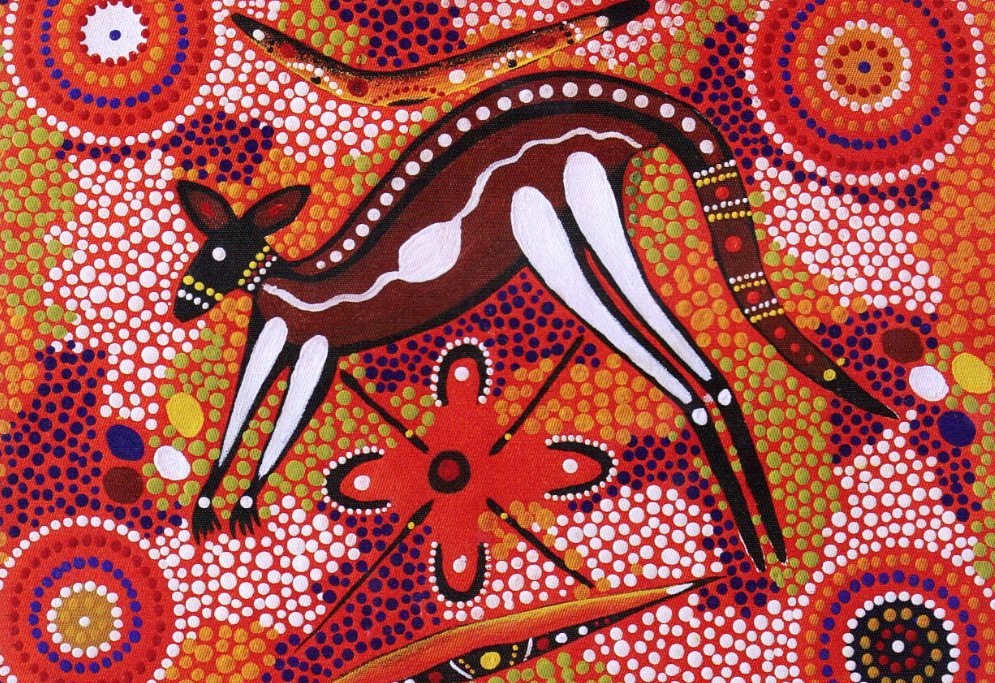Unveiling the Ancient Tapestry: Exploring Aboriginal Culture, Beliefs, and the Dreamtime
Unveiling the Ancient Tapestry: Exploring Aboriginal Culture, Beliefs, and the Dreamtime

The vibrant tapestry of Aboriginal culture, woven with threads of ancient knowledge, spiritual connection, and deep respect for the land, is a testament to a history spanning tens of thousands of years. This rich heritage, passed down through generations, encompasses a unique worldview that centers around the concept of the Dreamtime, a realm where the spiritual and physical worlds intertwine. Understanding Aboriginal culture requires delving into this profound concept and the beliefs that shape their lives, their connection to the land, and their deep sense of responsibility towards future generations.
The Dreamtime: A Foundation of Existence
Related Articles: Unveiling the Ancient Tapestry: Exploring Aboriginal Culture, Beliefs, and the Dreamtime
- Understanding The Meaning Of "Aboriginal Person": A Deep Dive Into Indigenous Identities And Cultures
- Totems: A Journey Through Symbolism, History, And Meaning
- A Journey Through The Sounds Of Australia: Exploring Unique Instruments Of The Land Down Under
- A Tapestry Of Cultures: Exploring The Rich Histories Of Australian Aboriginal And Tamil People
- Our Beaut Us Tree AustraliaTitle
The Dreamtime, also known as the "Dreaming," is not merely a period in the past but a timeless realm where the ancestral beings, the creators of the world, brought forth the land, its features, and all living things. It is a spiritual foundation upon which Aboriginal culture rests, providing a framework for understanding the world, their place within it, and their responsibilities to the land and its inhabitants.
The Ancestral Beings: Shaping the Land and Life
The Dreamtime is populated by ancestral beings, powerful and transformative figures who, through their journeys and actions, shaped the land, its rivers, mountains, flora, fauna, and even the very essence of human life. These beings are not just historical figures but living forces that continue to influence the present, connecting the past, present, and future.
- Creation Stories: Each Aboriginal nation has its own unique creation stories, narrated through intricate rock art, songs, dances, and oral traditions. These stories detail the journeys of the ancestral beings, their actions, and the creation of the land and its inhabitants. They serve as a guide to understanding the land, its resources, and the responsibilities associated with each place.
- Spiritual Connection: The ancestral beings are not simply figures of the past; they are deeply connected to the present. Aboriginal people believe they can communicate with these beings through ceremonies, rituals, and connection to the land. This connection provides guidance, wisdom, and a sense of belonging.
The Land: A Sacred Canvas of Life and History

The land is not just a resource for Aboriginal people; it is a sacred entity, a living being that embodies the stories, the spirits, and the very essence of the Dreamtime. It is a tangible manifestation of the ancestral beings’ journeys and actions, and every feature, from a mountain peak to a flowing river, holds spiritual significance.
- Land Ownership: Aboriginal people have a deep connection to the land that goes beyond ownership. It is a responsibility, a duty to care for the land and its resources, and to preserve the stories and knowledge passed down through generations.
- Environmental Stewardship: Aboriginal people have long practiced sustainable living practices, understanding the interconnectedness of all living things. Their knowledge of the land, its resources, and its delicate balance informs their approach to resource management, ensuring the land’s well-being for future generations.

Ceremonies and Rituals: Maintaining the Connection
Aboriginal ceremonies and rituals are not mere performances; they are vital expressions of their connection to the Dreamtime and their responsibility to the land. They are a way of honoring the ancestral beings, seeking guidance, and reaffirming their cultural identity.
- Dance and Song: Dance and song are powerful tools for storytelling, conveying the journeys of the ancestral beings, their actions, and the lessons learned from them. These performances are not just entertainment; they are a form of spiritual communication and a way of connecting with the Dreamtime.
- Art and Symbolism: Aboriginal art is not merely decorative; it is a visual language that encodes stories, knowledge, and spiritual beliefs. From rock art to intricate designs on tools and weapons, every piece of art is a testament to their connection to the land and the Dreamtime.

The Importance of Cultural Preservation
The preservation of Aboriginal culture is not just about protecting traditions; it is about safeguarding a unique worldview, a deep connection to the land, and a rich legacy of knowledge and wisdom.
- Oral Traditions: Oral traditions are the lifeblood of Aboriginal culture, passing down stories, knowledge, and beliefs through generations. These traditions are vital for maintaining cultural identity and ensuring the continuity of their connection to the Dreamtime.
- Contemporary Relevance: Aboriginal culture is not a relic of the past; it is a living, evolving tradition that continues to inform their lives, their perspectives, and their understanding of the world. It is a source of strength, resilience, and wisdom that remains relevant in the modern world.
Challenges and Resilience
Aboriginal culture has faced numerous challenges, from colonization and dispossession to cultural assimilation and the erosion of traditional knowledge. Despite these hardships, Aboriginal communities have demonstrated remarkable resilience, actively working to preserve their culture, language, and connection to the land.
- Reconciliation and Healing: The journey towards reconciliation involves acknowledging the injustices faced by Aboriginal people and working towards a future where their culture, rights, and voices are respected.
- Cultural Revitalization: Aboriginal communities are actively engaged in revitalizing their culture, reclaiming their languages, and passing on traditional knowledge to future generations.
FAQ: Understanding Aboriginal Culture and the Dreamtime
Q: What is the Dreamtime?
A: The Dreamtime is a timeless realm in Aboriginal belief, where ancestral beings created the land, its features, and all living things. It is a spiritual foundation that shapes their worldview and connection to the land.
Q: Who are the ancestral beings?
A: Ancestral beings are powerful figures who shaped the land and its inhabitants during the Dreamtime. They are not simply historical figures but living forces that continue to influence the present.
Q: How is the land important to Aboriginal culture?
A: The land is sacred to Aboriginal people, embodying the stories, spirits, and essence of the Dreamtime. They have a deep responsibility to care for the land and its resources for future generations.
Q: What are some key elements of Aboriginal ceremonies and rituals?
A: Ceremonies and rituals are vital expressions of their connection to the Dreamtime and the land. They involve dance, song, art, and symbolism, all serving to honor the ancestral beings and maintain cultural identity.
Q: What are the challenges faced by Aboriginal culture?
A: Aboriginal culture has faced challenges from colonization, dispossession, and assimilation. However, they have demonstrated resilience in preserving their culture and traditions.
Q: What is the significance of cultural preservation for Aboriginal communities?
A: Cultural preservation is crucial for maintaining their connection to the Dreamtime, their identity, and their unique worldview. It is a source of strength and resilience in the face of challenges.
Conclusion
Understanding Aboriginal culture and the Dreamtime is not just about learning facts; it is about appreciating a unique worldview, a deep connection to the land, and a rich heritage that has sustained communities for millennia. By embracing the lessons of the Dreamtime, we can learn to respect the land, appreciate the wisdom of ancient knowledge, and strive for a future where all cultures are valued and celebrated.

Closure
Thus, we hope this article has provided valuable insights into Unveiling the Ancient Tapestry: Exploring Aboriginal Culture, Beliefs, and the Dreamtime. We hope you find this article informative and beneficial. See you in our next article!


